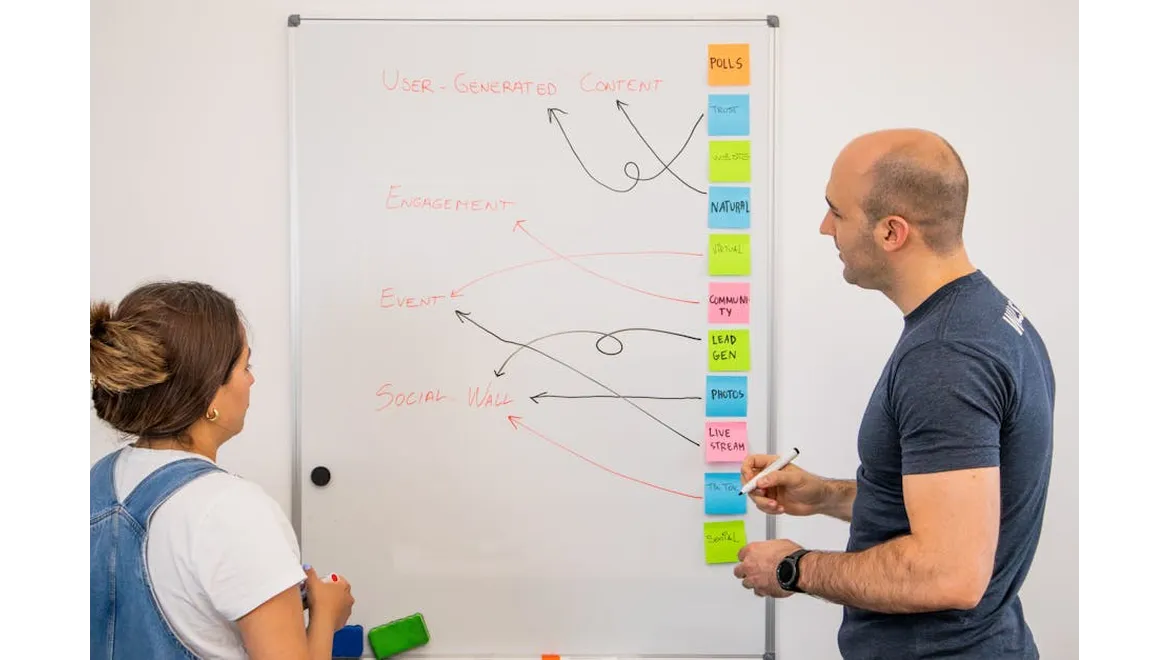Right, so I had a good chinwag with Billy the other day about generating new business on LinkedIn. We were bouncing around innovative ideas, and it quickly became clear that simply posting generic content wasn’t cutting it anymore. We needed to get really clever. Our discussion soon focused on leveraging data-driven audience insights and predictive lead scoring – basically, understanding who we’re talking to and prioritizing those who are most likely to become customers.
“It’s all about quality over quantity, innit?” Billy said, echoing my thoughts exactly.
Here’s the gist of our conversation, broken down so you can implement these strategies yourself:
1. Diving Deep with Sales Navigator:
We started with LinkedIn Sales Navigator. This is more than just a glorified search tool; it’s a treasure trove of data. We talked about how we can use the advanced search filters to pinpoint our ideal customer profile (ICP) with laser precision. We weren’t just looking for job titles; we were digging into their:
- Industry: Obvious, but important. But dig deeper than just the broad category. Are there sub-sectors within the industry that are more receptive to your offering?
- Company Size: Do you work better with startups or large enterprises? Are you pricing model only suitable for certain sized companies?
- Function: Marketing, Sales, Operations, etc. Understanding their functional area helps you tailor your messaging.
- Seniority Level: Are you targeting decision-makers, influencers, or users?
- Keywords: What are they talking about in their posts and articles? What skills do they list on their profiles? This reveals their interests and pain points.
- Group Memberships: Which LinkedIn groups are they active in? This indicates their areas of interest and allows you to engage in relevant discussions.
- Recent Activity: Have they recently changed jobs? Attended a conference? These events can be triggers for outreach.
Billy made a cracking point: “Don’t just save your leads. Tag them in Sales Navigator!” This allows you to segment your audience based on different criteria (e.g., “Potential Investor,” “Strategic Partner,” “Competitor Target”) and tailor your follow-up accordingly. I completely agreed. Tagging allows for a much more granular and personalized approach.
2. Beyond the Search: Analyzing Engagement:
Sales Navigator also provides valuable insights into how your target audience engages with your content and the content of others. We discussed the importance of monitoring:
- Who’s viewing your profile: Are the right people seeing your content? If not, you need to adjust your strategy.
- Who’s engaging with your posts: What type of content resonates with them? Are they liking, commenting, or sharing?
- What topics are they discussing: What are the current trends and pain points in their industry? Use this information to create relevant content.
We realised that paying close attention to these engagement metrics allows you to refine your messaging and content strategy, ensuring that you’re delivering value to your target audience.
3. Predictive Lead Scoring: Prioritizing Your Efforts:
This is where things get really interesting. The goal of predictive lead scoring is to identify the prospects who are most likely to convert into customers. We use the insights we’ve gathered from Sales Navigator and other data analytics tools to create a scoring model.
Factors we discussed including in the model:
- Job Title: Higher-level decision-makers should receive a higher score.
- Company Size: If you typically work with companies of a certain size, give those leads a higher score.
- Engagement with Your Content: Leads who regularly engage with your posts and articles are more likely to be interested in your product or service.
- Activity in Relevant Groups: Active participants in industry-specific groups are more likely to be knowledgeable and engaged.
- Website Visits: If a lead has visited your website and explored pricing pages, they are clearly interested.
Billy and I both agreed that the key is not just assigning scores, but acting on them.
For example:
- High-scoring leads: Reach out immediately with a personalized message and offer a demo or consultation.
- Medium-scoring leads: Send them targeted content and nurture them with valuable resources.
- Low-scoring leads: Add them to your email list and continue to provide them with valuable content until they become more engaged.
4. External Data Sources:
LinkedIn is fantastic, but don’t rely solely on its data. We talked about how to integrate data from other sources, such as your CRM, marketing automation platform, and website analytics. This provides a more complete picture of your target audience and allows you to refine your lead scoring model.
- CRM Data: Track lead interactions, sales cycles, and customer lifetime value.
- Marketing Automation Data: Monitor email opens, click-through rates, and website activity.
- Website Analytics: Analyze website traffic, bounce rates, and conversion rates.
By combining data from multiple sources, you can create a more accurate and effective lead scoring model.
So, there you have it. My conversation with Billy was a real eye-opener. By combining LinkedIn Sales Navigator’s advanced search capabilities with engagement analysis, predictive lead scoring, and external data sources, we can target our efforts with remarkable precision. It’s not about blasting out generic messages to everyone, it’s about finding the right people and building genuine relationships. Understand their needs, offer value, and prioritize those who show the most promise. That’s the secret sauce to generating new business on LinkedIn.











